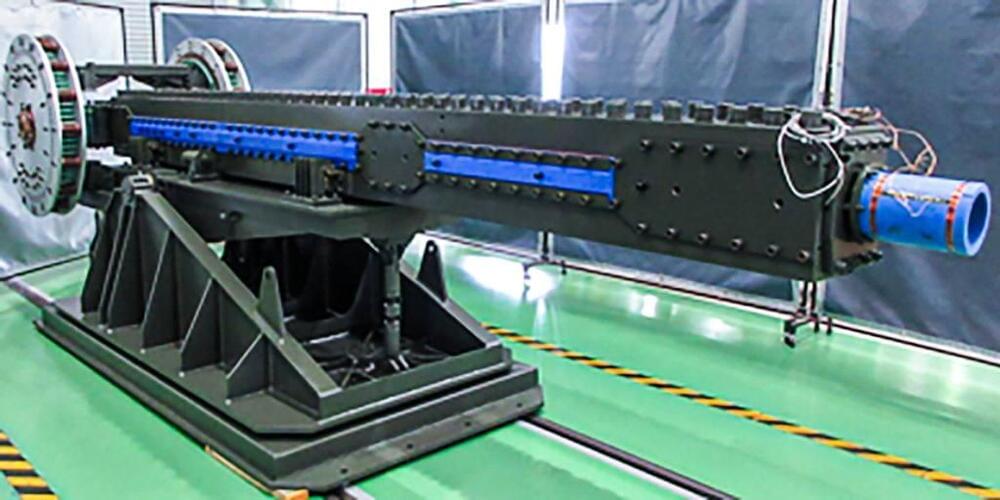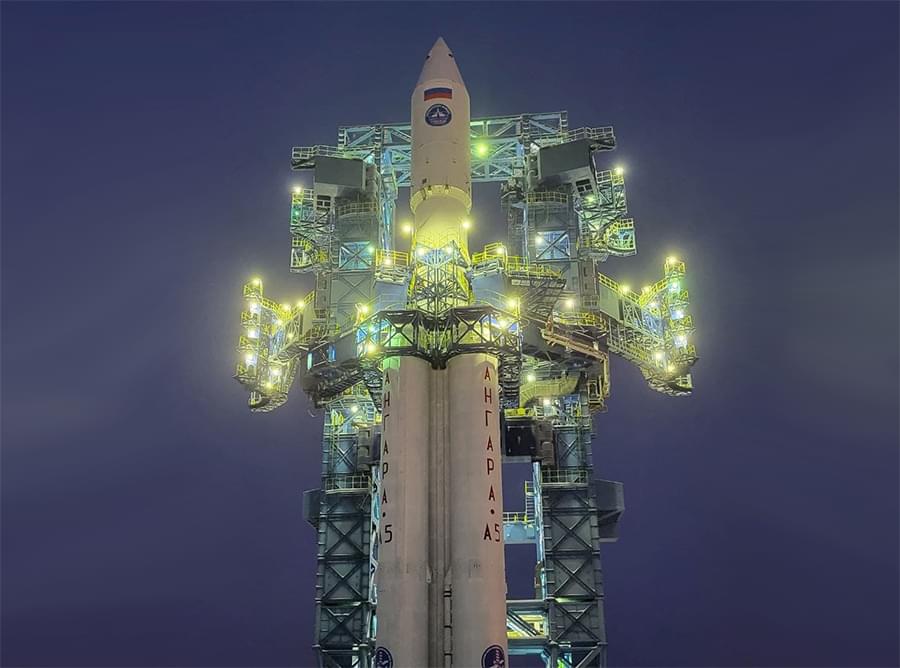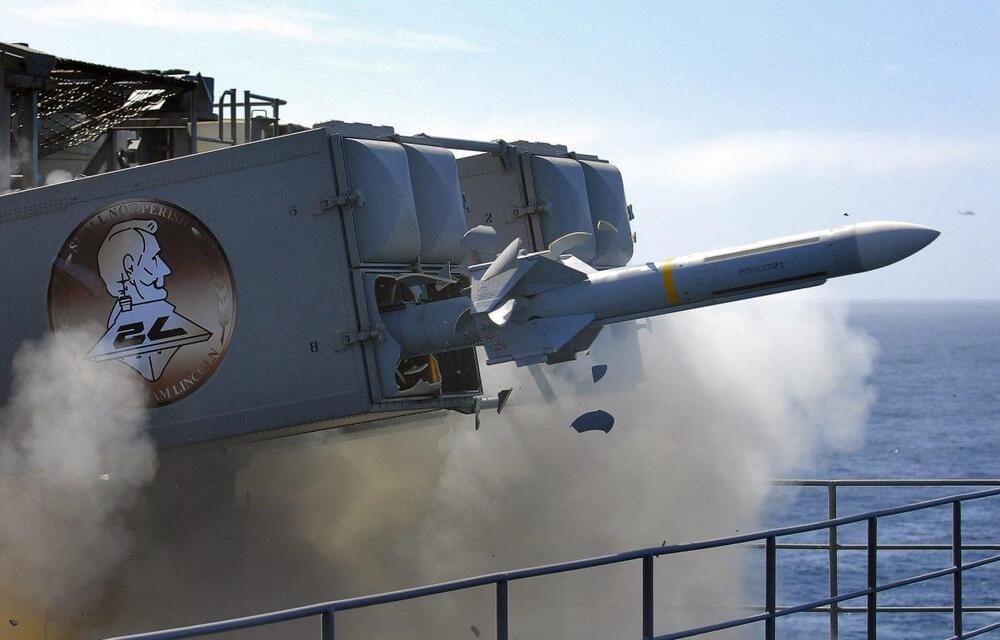North Korea has said it’s successfully launched another hypersonic missile. But what are hypersonic missiles, and should we be worried?
Project Force presenter @AlexGatopoulos breaks it down.
North Korea has said it’s successfully launched another hypersonic missile. But what are hypersonic missiles, and should we be worried?
Project Force presenter @AlexGatopoulos breaks it down.

Defense Ministry expects to have a bolstered intercept system by late 2020s.
TOKYO — The Japanese Defense Ministry will develop a means to intercept hostile missiles using magnetically powered projectiles, sources told Nikkei Asia, as the nation scurries to respond to the hypersonic weapons being developed by China, North Korea and Russia.

The People’s Republic of China, the French Republic, the Russian Federation, the United Kingdom of Great Britain and Northern Ireland, and the United States of America consider the avoidance of war between Nuclear-Weapon States and the reduction of strategic risks as our foremost responsibilities.
We affirm that a nuclear war cannot be won and must never be fought. As nuclear use would have far-reaching consequences, we also affirm that nuclear weapons—for as long as they continue to exist—should serve defensive purposes, deter aggression, and prevent war. We believe strongly that the further spread of such weapons must be prevented.
We reaffirm the importance of addressing nuclear threats and emphasize the importance of preserving and complying with our bilateral and multilateral non-proliferation, disarmament, and arms control agreements and commitments. We remain committed to our Nuclear Non-Proliferation Treaty (NPT) obligations, including our Article VI obligation “to pursue negotiations in good faith on effective measures relating to cessation of the nuclear arms race at an early date and to nuclear disarmament, and on a treaty on general and complete disarmament under strict and effective international control.”

An updated forecast released today suggests that an out-of-control Russian tumbling back towards Earth could strike on Wednesday afternoon. In an updated forecast shared by Joseph Remis on satflare.com and Twitter, it shows the rocket re-entering around 12:44pm ET on Wednesday, January 5. Because the rocket is uncontrolled and could shift around erratically as it enters the Earth’s atmosphere, impact could occur +/- 7 hours of that estimated strike time. Returning to Earth in an out-of-control manner is the Persei upper stage rocket which carried a dummy payload into space as part of Russia’s Angara A5 rocket test.
On December 27, the Russian Angara A5 rocket lifted off from the Plesetsk Cosmodrome. Named after a river in Siberia, the Angara rocket is the first heavy-lift launch vehicle used by the Russians in decades. The December 27 launch was the third test flight of the giant rocket. While the launch was flawless, an upper-stage rocket failed to successfully fire.
While the Angara’s first two stages fired as planned, the third stage, a Persei rocket, failed to fire a second time. While the first fire helped put the dummy payload it was carrying into low-Earth orbit, the failure of the second fire failed to put the dummy payload into a geostationary orbit. Instead, the 20 ton mass is tumbling out of control to Earth. While Roscosmos shared pictures and a congratulations message before and immediately after the Angara launch, they’ve offered no comment on the Persei rocket and the failure for it to fire, deferring instead to the Russian military which was responsible for the launch. As of press time, the Russian military has offered no comment on this rocket.

😀
Five of the world’s largest nuclear powers pledged on Monday to work together toward “a world without nuclear weapons” in a rare statement of unity amid rising East-West tensions.
“A nuclear war cannot be won and must never be fought,” said the joint statement, which was issued simultaneously by the United States, Russia, China, the United Kingdom and France. “As nuclear use would have far-reaching consequences, we also affirm that nuclear weapons — for as long as they continue to exist — should serve defensive purposes, deter aggression, and prevent war.”
The statement also stressed the importance of preventing conflict between nuclear-weapon states from escalating, describing it as a “foremost responsibility.”


The Navy’s costliest warship finally has all the elevators needed to lift bombs from below its deck so it can deploy on its first operational patrol — more than four and a half years after delivery.
The service has announced that the 11th and final Advanced Weapons Elevator is in place on the $13.3 billion USS Gerald R. Ford and the aircraft carrier is ready for training and operations.
“This is a significant milestone for the Navy, ship and her crew,” Rear Admiral James Downey, the Navy’s program executive officer for aircraft carriers, said in a statement. “We now have the entire system to operate and train with.” He said the service and the prime contractor, Huntington Ingalls Industries Inc., used “hundreds of craftsmen, technicians and engineers, working around the clock —through multiple underway and holiday periods — to get these advanced systems on line and operational.”

Defense company Raytheon has clinched a US Navy contract to provide engineering and technical services for the Evolved Seasparrow Missile and NATO Seasparrow Missile programs, the Pentagon has said.
A press release by the Department of Defense on December 30 stated, “Raytheon Company [of] Tucson, Arizona, is awarded a $55,121,826 modification to a previously awarded contract for engineering and technical services in support of the Evolved Seasparrow Missile and NATO Seasparrow Missile Systems programs.”
The contract combines purchases for the US government (99%); and those of Japan and the United Arab Emirates (1%) under the Foreign Military Sales program.
Hypersonic air travel is anything that travels at Mach 5, or five times the speed of sound. The U.S. was once a leader in developing supersonic and hypersonic technology, but has taken “our foot off the gas,” according to Mark Lewis, executive director of the National Defense Industrial Association’s Emerging Technologies Institute.
Watch the video to find out more about how the U.S. fell behind Russia, China and possibly North Korea, and how we’re spending billions to catch up.
Hypersonic air travel, for both military and commercial use, could be here within the decade.
The $770 billion National Defense Authorization Act signed into law Tuesday calls for investing billions into hypersonic research and development, making them a top priority for Washington. The next step is congressional approval to allocate the money for the technology to the Pentagon.
“If you are traveling at hypersonic speeds, you’re, you’re going more than a mile per second,” said Mark Lewis, executive director of the National Defense Industrial Association’s Emerging Technologies Institute. “That’s important for military applications. It could have commercial applications. It could also open up new, new ways of reaching space.”
Hypersonic is anything traveling above Mach 5, or five times the speed of sound. That’s roughly 3,800 mph. At those speeds, commercial planes could travel from New York to London in under two hours.